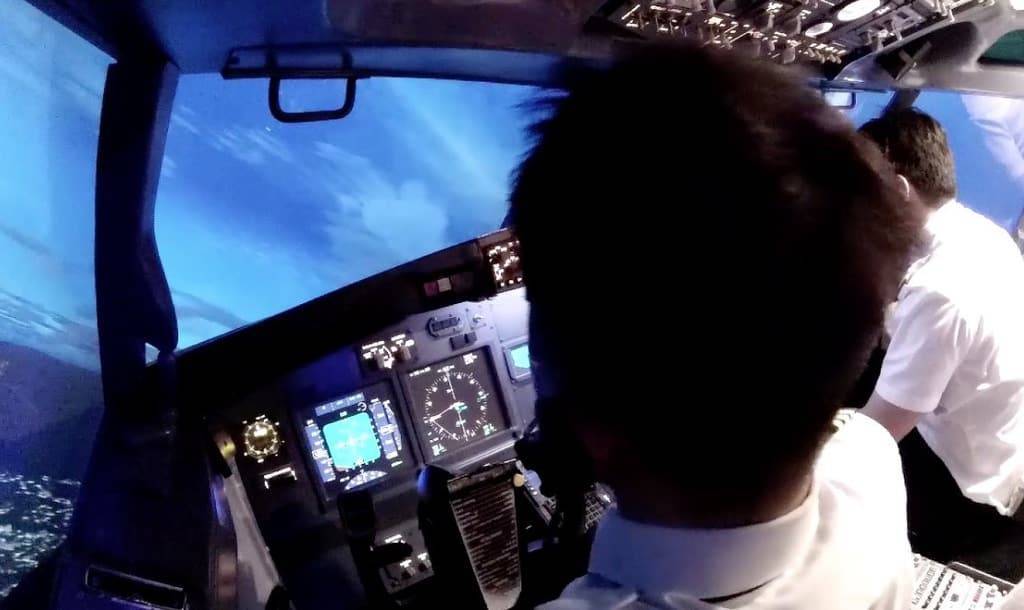Have you noticed how frequently “accidents” occur on local highways? There are at least two reasons why – or the lack of these two reasons. Likewise, many leadership crashes happen because of the same two missing reasons.
When you drive on a highway here, you may be confounded how haphazard the traffic seems to be.
There are some drivers who would dart in and out of lanes, rather than stick to their lanes. Such haphazard drivers cause “accidents”. I put the word within inverted commas because I don’t consider these accidents, because such drivers are intentional in their driving. Conversely, when we drive on a highway in Australasia or north Asia, drivers tend to stick to their lanes. And so invariably, very few accidents happen (no inverted commas here, as accidents tend to be real accidents).
So, if you are a driver on such a highway, you need to take care of two things.
1. Discipline
From the flight deck, whether you are a Boeing or Airbus or any other multi-engine jet aircraft, you would be conforming to Crew Resource Management (CRM), which may vary slightly depending on your carrier or aircraft. In a typical CRM scenario, you will be working with another co-pilot, so the tag team of two will work collaboratively, competently and carefully to get from origin to destination.
In a single pilot aircraft, you can also conform to CRM as a best practice. And this is the same scenario as a driver in a vehicle on the roads. You are your own pilot, in a single-driver vehicle.
There are three things that we need to take care of: Checklists, Practice, and Tests (base checks in aviation lingo).
1a. Checklists
No matter how experienced a pilot, he or she would have to conform to the battery of checklist procedures from pushback, take off, cruise, descent, approach, landing, taxi, etc. Skipping steps may result in endangering both the crew and the passengers, as well as destroying the aircraft. In a vehicle scenario, all your checklists recommended through local license training should be conformed to religiously. Skipping steps would also likely result in damaging your vehicle (in lesser circumstances), or endangering others like pedestrians, other vehicle users, or even infrastructures like lampposts, traffic lights, bus stops, or buildings.
1b. Practice
Pilots are always put through practice. Even if you are experienced, you would have to go through regular learning, upgrading, new type rating, etc. Some pilots even practice in home-built desktop flight simulators, to ensure that they remember all the procedures and actions they need to take, whether in routine or extraordinary scenarios. As a vehicle owner, how often do you put yourself through continuous learning rather than rely on historical performance, which will usually degrade over time due to complacency and arrogance. Some diligent drivers will even go to the extent of attending performance or defensive driving workshops, where they learn how to better handle their vehicles in wet roads, maintaining vehicle stability, make safer lane changes, or understanding stopping distances during emergency braking. Do you?
1c. Tests
Another aspect of discipline are tests. Pilots go through base checks and line checks, after attending carrier type rating and line training programs. This means that they will be subjected to emergency and unpredictable scenarios to see how they manage in such scenarios, within the confines of a flight simulator. Pilots are also put through medical exams to ensure their health are optimal, and those who fail such tests will be suspended. As a vehicle user, you are usually not subject to such regular tests or health checks. But you should. If you are not put through tests, learn more. Study human factors and performance, study the technical and performance characteristics of your vehicle. And certainly, go for health checks.
Leaders cannot expect to be leaders in a vacuum, or a glass tower. Leaders lead by standing in front of the charge. Otherwise, they are no different from cowards. Leaders must lead by discipline, with frequent and relentless practice, a focus on details (checklists), and focusing on getting the whole team to perform as a team. Leaders will set the example by doing the field jobs, and then being able to empathize how best to get every facet of every job done, well.
2. Anticipation
In the flight deck, decisions are NEVER last minute. When an aircraft is to land at a particular airport, the descent and approach are all well planned and calculated ahead of schedule, and executed flawlessly to destination. Pilots anticipate the future events based on logic, math, available data (such as weather and traffic), and make their flights comfortable to everyone on the aircraft.
Let’s say you would exit at Exit 11 along a highway every day as you go to work. How soon do you plan your path so that you will comfortably move towards the exit lane? More often than not, many local drivers here would move to the overtaking lane (the extreme right lane) on the highway, and then hazardously move to the left very rapidly to exit, without regards for road laws. Often, such zig-zag behavior caused many accidents, way too many to count, and holding up other law-abiding road users along highways to unending jams.
The 3 components of anticipation are: Calculation, Scenarios, and Backups.
2a. Calculation
Pilots have all the data on hand, including their speeds, direction, way points, fuel, winds, etc. They have the parameters and formulae, to calculate how best to land at the destination safely and expediently. When descending, flight levels are gradually changed to ensure a smooth approach to landing. For road drivers, you will also have data and parameters, such as your average speed, traffic, and maybe even on-board GPS displays. You should be able to calculate how best to get to your destination by making smooth and gradual lane changes and select the right routes. You should not need to make “last-minute” decisions except during emergencies.
2b. Scenarios
Pilots have all the scenarios planned and played in their heads routinely and religiously so that they would mentally be prudent and capable in handling any foreseeable changes. Pilots are not superhuman, but they are logical thinkers who put through all possible outcomes on their mind map and determine best outcomes and actions. Road conditions can change for road drivers. For example, if there is tree pruning along a point in the highway and the signboards or national radio has warned of this, you can plan your scenarios including possible routes, time needed, etc. You can play out such scenarios for road traffic just as pilots can for aircraft.
2c. Backups
While we talk about a “plan B” in business, pilots have “plan B”, “plan C”, and “plan D” all lined up on top of the usual “plan A”. Complacency is not the ethos of aviation, and it should never be for road drivers either. Make alternative plans and have them ready to execute in a second, when your “plan A” fails. This is simple to understand. For example, if you get to your office in the central business district through Highway A every day, do not assume Highway A will always be available or be without incident. Design alternative routes by alternative roads or highways, or even make plans to work from satellite or home locations, such as in extreme bad weather. Always have at least one backup plan, if not more. In this manner, you will never have the “startle effect” in aviation, and be ready for any eventuality.
Leaders need foresight to lead. Leaders cannot lead blindly and make decisions like gamblers. They need to anticipate how things will pan out, with backup and alternative plans and actions, playing out all possible scenarios and finding all data and parameters to make the best decisions for the most profitable outcomes.
Just as pilots rely on Discipline and Anticipation to get you safely from your origin to your destination, you can adopt the same work ethic in your driving habits, any professional work, and yes, leading your teams.

